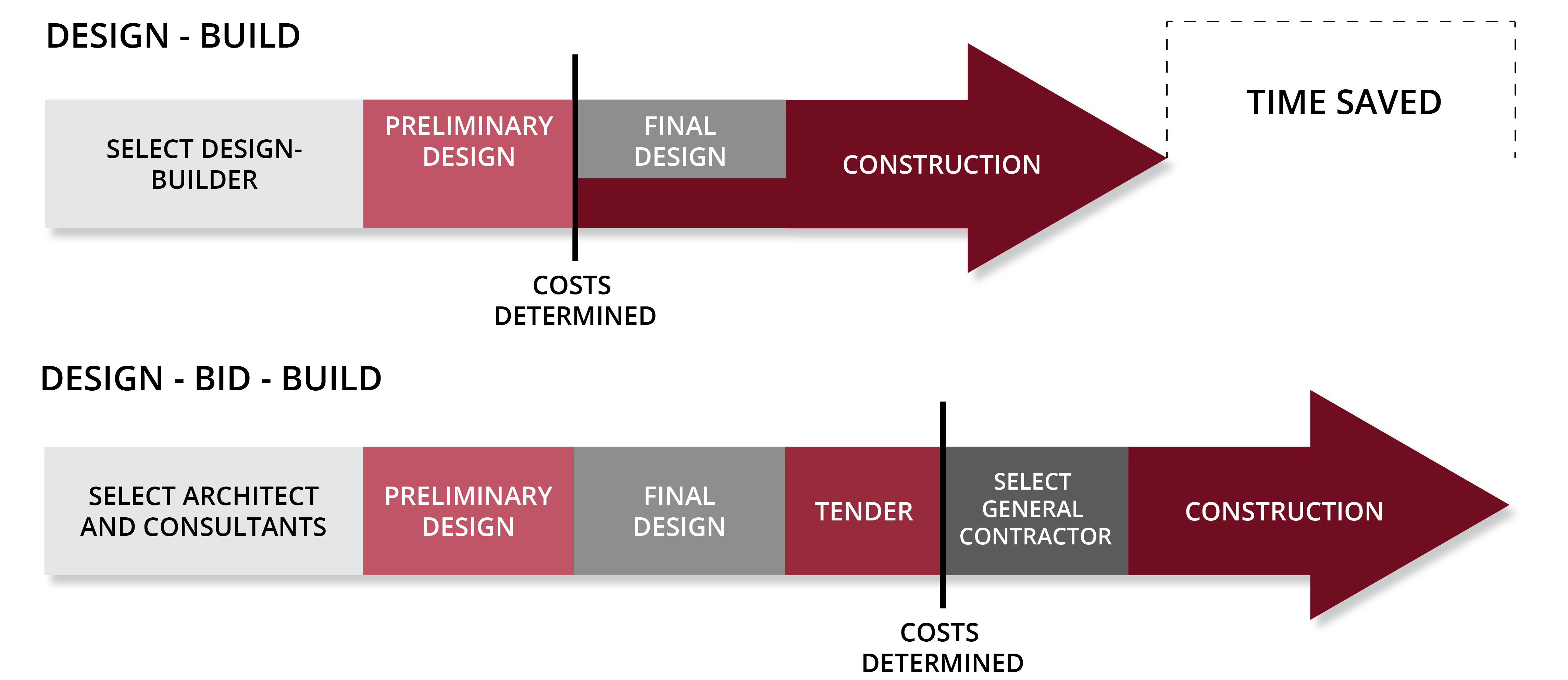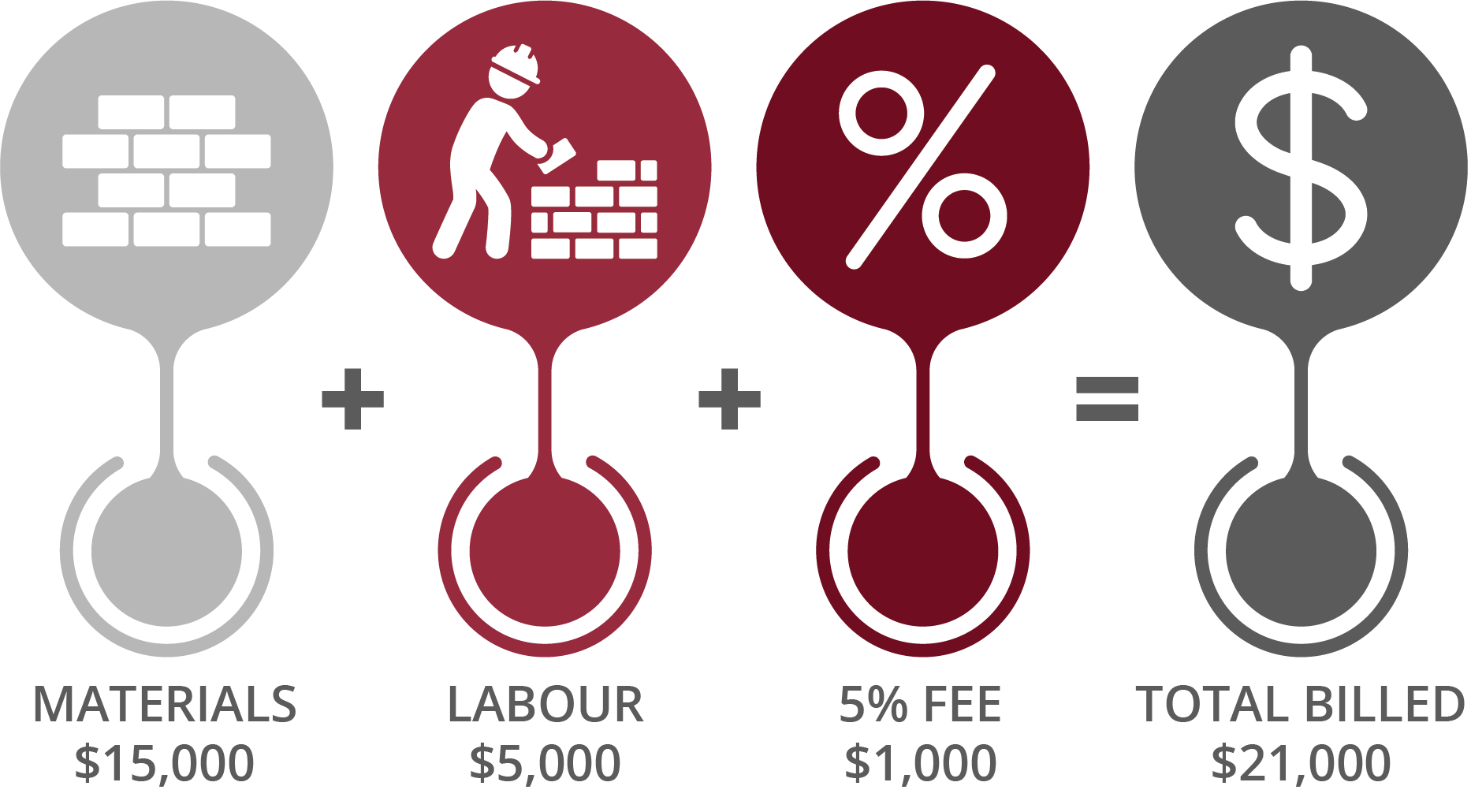What We Do
Simply put, we build things.
|
From general contracting to complete building design and construction, our team can assist an Owner at every stage, beginning at assessing feasibility through to commissioning and turnover. We utilize a variety of delivery methods for our construction services based on our clients needs. The best method and contract style can be selected, taking into account many factors. Items that may influence the chosen delivery method include:
|
 |
The three most common delivery methods are:
Design-Build
Single point of responsibility.
Under a Design-Build delivery method, the Prime Contractor is under a direct contract with the owner to act as the Design-Builder. The Design-Builder then engages the Architect and Consultants under subcontracts. This differs from the “traditional” delivery method as the owner enters a singular contract with the Design-Builder as opposed to multiple contracts with the Architect and a general contractor.
This method of delivery has several specific advantages:
- Singular Responsibility
- Enhanced Collaboration
- Time Savings
- Cost Savings
- Reduced Risk to the Owner
Singular Responsibility
With both the design and construction of the project in the hands of the Design-Builder there is a single point of responsibility for quality, cost and schedule adherence. This means that the Design-Builder is motivated to deliver a successful project by fulfilling multiple parallel objectives.
Enhanced Collaboration
Collaboration and trust are key to the Design-Build approach. All parties bring their expertise to the project, which elevates the overall design, construction process and finished product.
Time Savings
By combining the selection of a designer and a builder into a single step, the Design-Build delivery method allows for construction to begin before the entire design is completed. Activities such as design, permitting, surveying, etc. can occur concurrently resulting in significant time savings.
Cost Savings
Construction contractors have direct and real experience with the costs of purchasing and installing materials, labour, equipment rentals and more. This allows the Design-Builder to share that experience directly with the designer during the early stages of the project. This can translate into higher value engineering and less changes over the course of the project, further translating into lower overall costs.
Reduced Risk to the Owner
The single-point of responsibility created with the Design-Build method helps to substantially reduce the Owner’s risk as compared to splitting responsibilities and contracts between designer and builder. Generally, the Design-Builder is in a better position to manage and minimize much of the risk associated with construction.

Construction Management
Utilizing this project delivery method, the Construction Manager (CM) is tasked with providing design and construction management for the Owner. The Construction Management delivery method consists of two phases: pre-construction and construction.
Pre-Construction
In this phase, the CM assists with design, development of drawings and specifications, budgeting, scheduling, permitting and construction methodology. As part of the pre-construction phase, the CM will typically retain the consultants (architects, engineers and specialties) under their contract, rather than the consultants being under direct contract with the owner.
Construction
During the construction phase, the CM is responsible for coordination, contracting and payment of all subcontractors, trades and suppliers. They are also responsible for cost control, schedule, commissioning and project turnover.
Engaging a CM prior to the completion of design and before investment commitments have been made is advantageous because the CM’s expertise can assist in determining the feasibility of the project.
The Construction Management project delivery method is billed on an actual-cost basis with a fixed or percentage-based fee added to the costs. This means that the client is billed for all of the materials, labour, rentals, etc. with the Construction Manager’s fee added. This fee is generally pre-determined during contract negotiations.

Design-Bid-Build
The "traditional" delivery method.
The "traditional” project delivery method, general contracting is typically divided into three distinct stages: Design, Bid and Build. It is a linear delivery method where one task follows completion of another with no overlap.

Design
During the Design stage, the architect and engineers are contracted directly to the owner to complete the project drawings and specifications. Once the design is complete the tender package, containing these drawing and specifications, is compiled and the project moves to the Bid stage.
Bid
The Bid stage begins when the tender package is sent out to the General Contractors (GC) for pricing. GC’s bid the project exactly as designed. At the end of the tender period, the GC bids are reviewed by the owner and design team and the lowest, compliant bid is typically selected.
Build
Once the GC is selected, the project moves into the Build stage. The GC is responsible for selection, contracting and management of subcontractors, trades and suppliers. This is the stage where actual, physical construction takes place. Over the course of construction, the GC has only one point of communication, the Architect, to resolve any issues, concerns or changes.
This delivery method can be advantageous to an Owner who has previous working relationships with specific architects and engineers. The Owner has the ability to post the tender package publicly, allowing any GC to bid on the project, or privately to a group of pre-qualified bidders.

Request A Quote
An account manager will get back to you within 24 hours.
